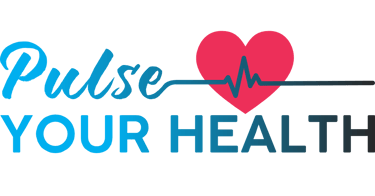Stay updated on what is trending in health. Discover tips and resources for a healthier, balanced life.
Tuberculosis (TB) Today: Are You at Risk?
Learn the key facts about tuberculosis (TB)—a serious infectious disease that still affects millions worldwide. Discover its symptoms, transmission, treatment options, and why awareness is more important than ever.
DISEASES AND CONDITIONS
Dr. S. Ali
5/16/20253 min read


Tuberculosis, or TB, is one of the oldest diseases known to humanity—and it's still with us today. Despite advances in medicine, TB remains a global health threat, especially in low- and middle-income countries. But what exactly is TB, how does it spread, and how can it be treated or prevented?
Let’s break it down.
What Is Tuberculosis (TB)?
Tuberculosis is an infectious disease caused by a bacterium called Mycobacterium tuberculosis. It primarily affects the lungs (pulmonary TB), but it can also spread to other parts of the body like the spine, brain, kidneys, or lymph nodes (extrapulmonary TB).
How Does TB Spread?
Tuberculosis is an airborne disease, but it doesn't spread as easily as the common cold. TB spreads only when someone has active TB disease in their lungs or throat—meaning the TB bacteria are multiplying and causing symptoms. When that person coughs, sneezes, speaks, or laughs, they release tiny droplets containing live Mycobacterium tuberculosis bacteria into the air.
If you breathe in these infected droplets, especially after prolonged or close contact, you could become infected.
It's important to note that TB does not spread through:
Shaking hands or hugging
Sharing food or drinks
Touching doorknobs or surfaces
Only people with active pulmonary TB can spread the disease to others. People with latent TB infection (where the bacteria are inactive and not causing symptoms) cannot transmit TB.
Latent TB vs. Active TB: What's the Difference?
Latent TB: You’re infected with the TB bacteria, but they’re inactive. You don’t feel sick, have no symptoms, and can’t spread it to others. However, the bacteria can "wake up" later and cause active TB—especially if your immune system weakens.
Active TB: The bacteria are multiplying and causing symptoms like cough, fever, weight loss, and fatigue. This form is contagious if it involves the lungs or throat.
What If You're on TB Treatment?
If you’ve been diagnosed with active TB and have started appropriate treatment:
You still have active TB, but the treatment quickly reduces your risk of spreading it.
Most people stop being contagious within 2 to 3 weeks of starting antibiotics, as long as they take their medications consistently and correctly.
It's crucial to finish the full course (usually 6 months or more) to completely kill the bacteria and prevent resistance.
So while you're still classified as having active TB during treatment, your ability to infect others drops significantly after the initial phase of medication.
Common Symptoms of Active TB
Persistent cough (lasting more than 2–3 weeks)
Coughing up blood or phlegm
Chest pain
Night sweats
Fever and chills
Unexplained weight loss
Fatigue
If you or someone you know has these symptoms—especially if they've been in contact with someone who has TB—it’s important to seek medical care right away.
Who Is Most at Risk?
While anyone can get TB, certain groups are more vulnerable:
People with weakened immune systems (e.g., HIV/AIDS, diabetes, cancer)
Smokers
Those living in crowded or poorly ventilated areas
Health workers in frequent contact with TB patients
People in countries where TB is common
How Is TB Diagnosed?
Doctors may use a combination of:
Tuberculin skin test (TST) or TB blood tests
Chest X-rays
Sputum test (to look for the bacteria in mucus)
Treatment: Yes, TB Is Curable
TB is treated with antibiotics—usually a combination of drugs taken for at least 6 months. Common medications include isoniazid, rifampin, ethambutol, and pyrazinamide.
Important: It’s crucial to complete the full course of treatment. Stopping early can lead to drug-resistant TB, which is much harder to treat.
What Is Drug-Resistant TB?
Some strains of TB bacteria have become resistant to standard antibiotics. This form—called MDR-TB (multidrug-resistant TB)—requires longer treatment with more toxic and expensive drugs.
Can TB Be Prevented?
Yes. Here’s how:
BCG vaccine: Common in countries with high TB rates. It doesn’t prevent all TB, but it protects children from severe forms.
Early detection and treatment: Reduces the risk of spread.
Proper ventilation in homes and public spaces.
Wearing masks and good respiratory hygiene in high-risk settings.
The Bottom Line
Tuberculosis is preventable, treatable, and curable—but it still poses a serious health risk around the world. Knowing the signs, getting tested if you’re at risk, and completing treatment are key to controlling this ancient but still dangerous disease.
Have questions or concerns about TB? Always speak to a healthcare provider. Early action saves lives.
Related Articles:
1. Tuberculosis (TB): Causes, Symptoms, Diagnosis and Safety
Sources:
1. Tuberculosis: A Global Health Problem
Journal of Health, Population and Nutrition
https://pmc.ncbi.nlm.nih.gov/articles/PMC2980871/
2. Tuberculosis: Current Situation, Challenges and Overview of its Control Programs in India
Journal of Global Infectious Diseases
https://pmc.ncbi.nlm.nih.gov/articles/PMC3125027/
3. Tuberculosis: Pathogenesis, Current Treatment Regimens and New Drug Targets
International Journal of Molecular Sciences
https://www.ncbi.nlm.nih.gov/pmc/articles/PMC10049048/
4. Tuberculosis - World Health Organization (WHO)
WHO Fact Sheet
https://www.who.int/news-room/fact-sheets/detail/tuberculosis
5. Tuberculosis - MSD Manuals
MSD Professional Version
https://www.msdmanuals.com/professional/infectious-diseases/mycobacteria/tuberculosis-tb
Pulse Your Health
Empowering you to achieve your health goals.
Contact
© 2025. All rights reserved.
Disclaimer: The content on this website is for informational purposes only and is not medical advice. Always seek the advice of your physician or other suitably qualified healthcare professional for diagnosis, treatment and your health related needs.
